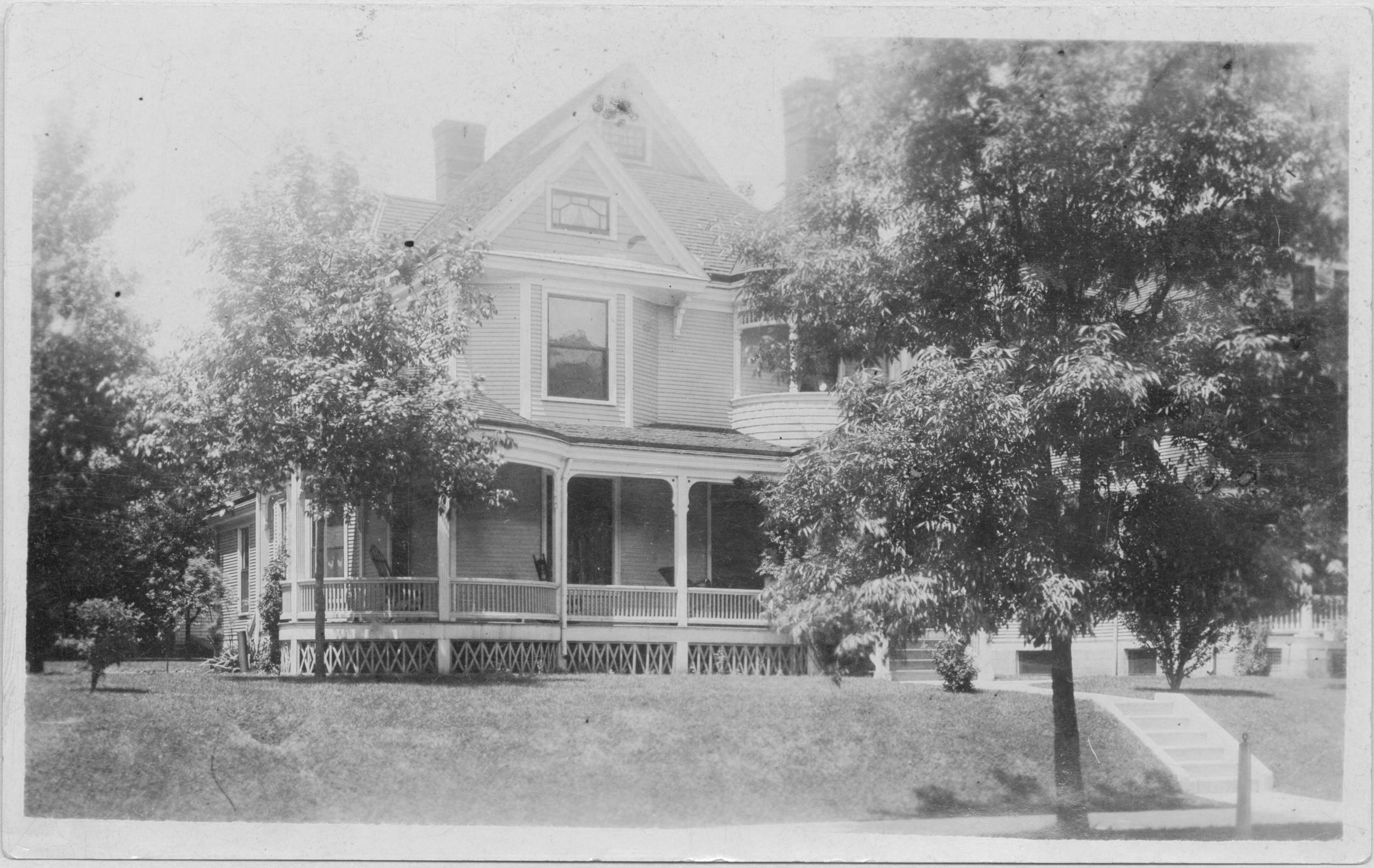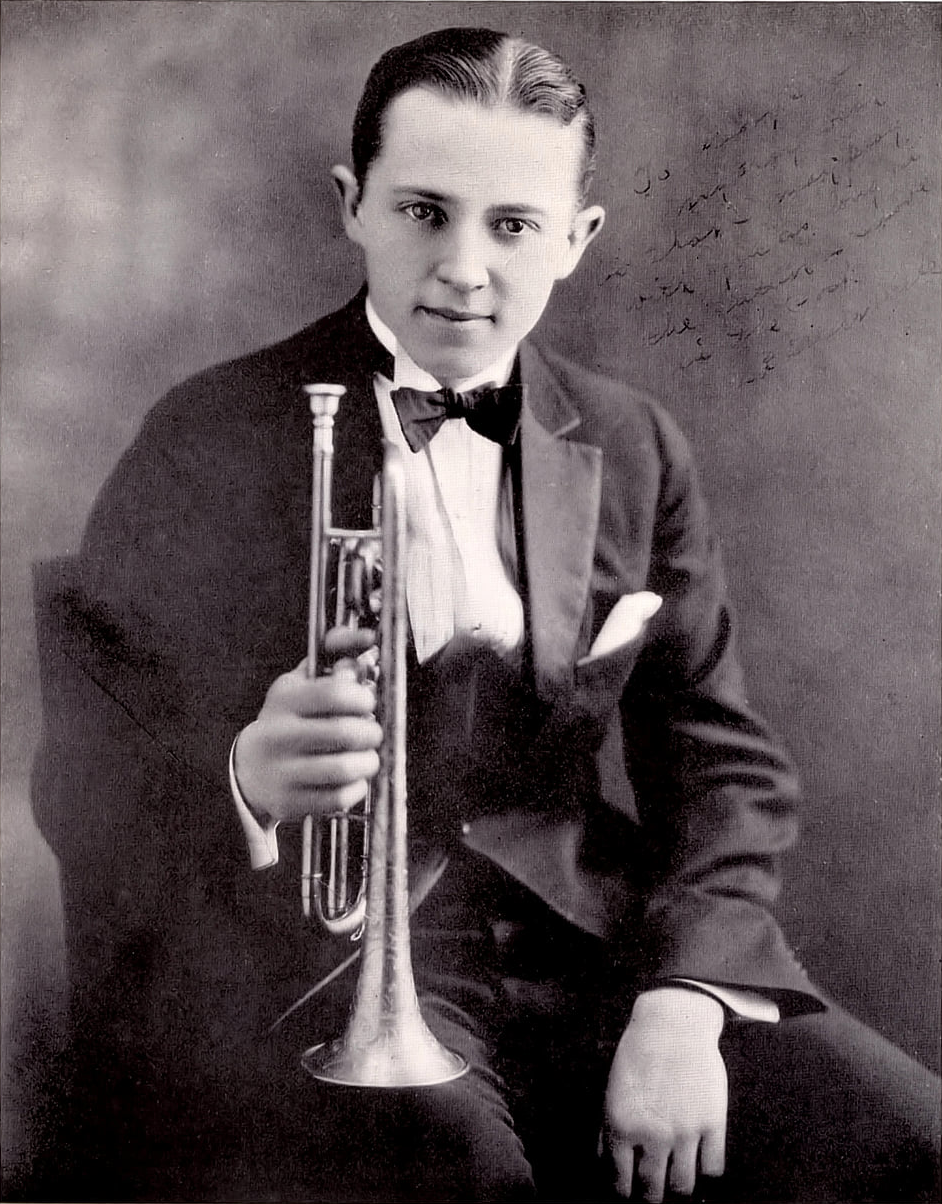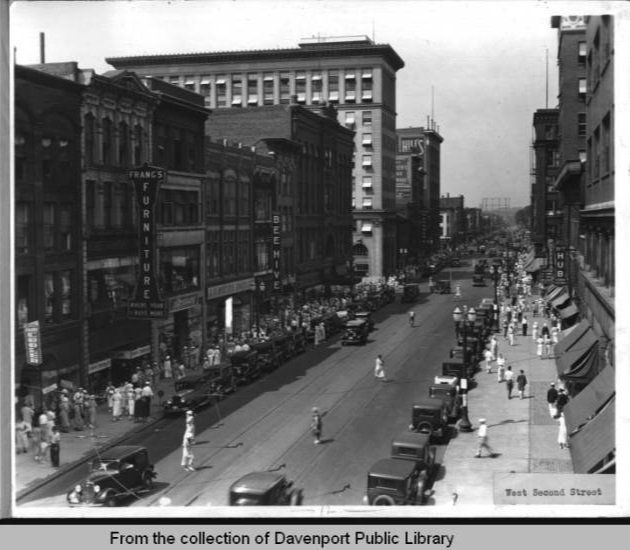Quad Cities during Bix’s Life
Leon Bismarck “Bix” Beiderbecke was an American cornetist, pianist, and composer during the 1920s. Before his time of being a highly influential jazz artist, “Bix” was just a young child living in Davenport. His father, Bismarck Herman Beiderbecke, owned a very successful fuel and lumber company, while his mother, Agatha Jane Hilton, was a very successful pianist. With his mother being a pianist, Bix was taught how to play the piano at a very young age. In the year of 1919, Bix’s brother purchased a Victrola; he was immediately intrigued by it. Bix then decided to teach himself how to play the Cornet, which was quite easy for him to learn how due to being able to play music by ear. He soon started playing with local bands around the area to get a sense of what the jazz life would be like.
Famous photo of Bix holding his cornet.
Bix would do late-night escapades to Chicago to play, as a result of his parents enrolling him in Lake Forest Academy. He would continue to go to Chicago and have late nights until he started to get bad grades, resulting in him getting kicked out of the academy in May of 1922. Bix had many opportunities after getting dismissed from the academy, he would start playing at many locations around Chicago and even got a gig out in Syracuse, NY. In April of 1923, the Benson Orchestra was out in Davenport for a gig leading to Bix and Benson meeting. By the end of 1923 Bix returned to Chicago and started his professional musician career.
The Friars Inn in Chicago where Bix played hung out regularly while attending Lake Forrest Academy.
A big question for a lot of people is “Why Davenport?” Bix may be the most influential talent to come out of the Quad Cities, but he was not the only influential figure who grew up in the area. During the 20th century some of the major names that grew up in the QC were Hazel Keener, Joe Frisco, Pat Patrick, and Louie Bellson. In the early 1900s, Davenport was known as the “wickedest city in America”. This was coined by Bishop Henry Cosgrove because of the Bucktown District, which hosted many brothels and speakeasies.
View of downtown Davenport from W 2nd St
The nightlife scene in Davenport brought in numerous musicians, there were 500-1000 bars, clubs, music/dance halls, saloons, and even speakeasies in operation each night. At this time, a very large number of immigrants started to populate the QC, especially Germans. The Germans that came to Davenport helped the industrialization and most of the buildings in downtown Davenport were built by them. Some notable companies during this time would be John Deere which is still a very big company through the country, Von Maur, Mac- Roh company, Rock Island Arsenal, and Palmer College of Chiropractic.
A lot of the Germans that moved into the QC area also brought their musical abilities and used it to show other people. They built many of the venues in operation and would showcase their music talent by playing for others. These immigrants brought organized music organizations to the community of the Quad Cities, like the Quad City Symphony Orchestra founded in 1913 as the Tri-City symphony. The symphony would consist mostly of members from the 1856 German Strasser Union Marching Band, which is considered the oldest music organizations in the country still in operation today.
This is the riverboat Quincy which was used as an excursion boat starting in 1918 by Streckfus. Prior to that, it was a passenger boat from 1896-1911.
One of the most important parts of Davenport is the Mississippi River, especially the music on the river. The river would have many steamboats going down the river carrying manufactured goods but those steamboats would also be used as venues. Day and night excursions would happen up and down the QC. These steamboats would bring on bands from all over the country, some would start up in Minnesota or even in Louisiana. Captain Joe Streckfus owned one of the largest steamboat excursion companies along the Mississippi. Streckfus would dock out of Rock Island and owned over a dozen boats that traveled from Duluth, Minnesota to New Orleans, Louisiana. His steamboat line is famous for having many Dixieland acts and he was the one to bring “Dixieland” to Iowa. Some of the famous Dixieland acts that he would have on his steamboats were Louis Armstrong and Fate Marable. Dixieland was the music that Bix fell in love with in high school and inspired him. Overall the QC was a very inspiring place where Bix had a lot of inspiration and help starting his career.
This page was designed by Brenna Paulson as part of a Field Experience internship project for the University of Northern Iowa’s History Department.




